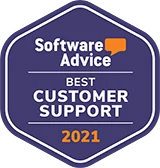Pricing is one of the most strategic decisions a company can make, yet it is often overlooked and treated as a tactic that aims to drive short-term results. Whether you're a starting entrepreneur or an experienced rental business owner, we hope this article helps you see pricing as more than just numbers and gives you new ideas on building your pricing strategy.
In this article, we will explain what pricing strategy is, cruise through different pricing strategies through examples, and how businesses should approach pricing strategically.
What is a pricing strategy?
Pricing strategy defines the way businesses use price to position themselves in their competitive landscape. Pricing strategy includes qualitative and quantitative evaluation of the different factors that go into setting a price for the product or service.
By approaching pricing from a strategic perspective, companies not only define how much their products and services cost and how the prices affect their financial plans but also position themselves relative to their competition. In addition to the quantitative nature of pricing, companies should pay attention to how pricing affects some of the more qualitative features of the business.
Quantitative features
-
Sales price
-
Unit cost
-
Margin
-
Demand estimates
-
Profit
Qualitative features
-
Brand positioning
-
Company image
-
Product quality
-
Promise of performance
-
Level of service
Why is strategic pricing so important?
Pricing is important since it’s something that defines the value of your products and services. It might just be the most important touch-point to your customers that lets them know your business is worth investing their time and money into.
If you think about the most important factors affecting consumers’ purchase decisions, the most common occurrence is that everything comes second to pricing. Everything else that happens in your business, user experiences, customer service, and design, works to support and help justify your set value for a price.
Strategic pricing is also key when it comes to improving profitability. It sets a product’s price based on the value to the customer rather than the cost. Regardless of the actual purchase price of the product you’re selling, it’s all about creating value around that product that will result in better profit margins. Here’s what an article published by Deloitte has to say on the matter:
‘’One study suggests that pricing has two to four times the potential to influence profitability relative to other business levers. Companies that actively pursue pricing as an important part of their strategy typically outperform industry peers on several financial metrics.’’
Psychology has a lot to do with this: Strategic pricing recognizes that purchase decisions are based on emotion rather than logic. Something that the customer finds valuable doesn’t necessarily correlate with what’s the most expensive for your business to produce.
Often prices are set only based on the quantitative factors mentioned above. The problem with only looking at the numbers is it brings short-term results. Of course, good deals and noticeably lower prices trigger customers into making purchase decisions in your favor. However, you should consider whether selling more for less is better than selling less for more.
Let’s imagine your prices are considerably lower than your competitor's while offering the same products. In addition to unknowingly sending signals about the quality of your products and services, the decision to compete with lower prices will cause your customer base to consist of more price-sensitive consumers who are typically less loyal because they base their decisions on who has the lowest price.
Taking into account the qualitative features of the business, you’re making sure the price you set also reflects the service and image you’re putting out to the world. Does your pricing set an expectation for a premium or ‘’you get what you pay for’’ type of customer experience? There is nothing wrong with either way. Just keep in mind how your prices affect the image people have about your business.
Pricing strategy examples
The nine quality-pricing model by Philip Kotler offers a great framework to evaluate a company's pricing relative to its competitors. Based on the competition, market conditions, goals, and your company's offering, you can evaluate the best approach to pricing and position your business in your market. Below we will present five common pricing strategies in more detail.
Kotler, P. (1988). Marketing Management: Analysis, Planning, Implementation and Control. 6th Ed. Englewood Cliffs, New Jersey. Prentice-Hall Inc.
1. Price skimming
Price skimming is a strategy for premium products and services. It’s effective when your customers are on the verge of the latest products and trends. The strategy works with a strong brand and capability to exclusively offer something your competitors can’t and, thus, have a monopoly position. Initially, you set the price point slightly higher and lower the price as time goes by and the competitive advantage weakens.
A business can use price skimming when the availability of certain products is limited, and alternatives are under the stone. A higher price point means a better profit margin leading you to break even faster. Granted, of course, the price you’ve set isn’t outrageous.
Setting a higher price and campaigning the new product addition makes it feel more exclusive. Then as time goes by, either when newer products are launched or it just otherwise makes sense, start lowering the price and making it more accessible for everyone.
2. Penetration pricing
Penetration pricing is the opposite of price skimming: instead of setting a higher price at the beginning and lowering it as time goes on, the strategy is all about capturing market share by setting prices lower than competitors. This strategy aims to gain momentum in establishing a stable position in the market and gaining customers by selling products and services at a lower price than their actual value would be.
Penetration pricing is typically used in the low to medium-quality product segments where volumes are the most important KPI and when the company aims to gain a share in a new market.
The strategy requires either deep pockets that can cover up the potential losses caused by selling products with small or negative profit margins or a competitive advantage in the efficiency of processes that allow the selling of products profitably at a lower price point than competitors.
Once the company gets the traction it’s looking for, it starts readjusting the price and increasing it little by little until the prices match the competition or the company’s long-term plan.
3. Cost-plus pricing
Cost plus pricing just might be the simplest pricing strategy there is. The strategy is based on knowing the cost of production or acquisition per unit, including both fixed and variable costs, adding a profit margin, and starting selling. This is the go-to and main pricing strategy for businesses just starting out because it’s simple.
In circular commerce, where products are sold as services, the approach is different because calculating a unit cost for a service is not that straightforward. In most cases, companies buy the equipment into their inventory, meaning each item has an acquisition cost. Instead of just adding a profit margin on top of the acquisition cost of the product and selling it forward, the first thing businesses need to figure out is the lifetime of the product. Meaning how long each item will serve the company before it’s sold forward or taken out of use and refurbished.
Second, businesses need to calculate how many cycles (rentals, subscription months) it will take for the product in order for it to pay itself back to the business. Remember to take into consideration the costs of maintaining the equipment (both monetary and work time) as well as the mandatory fixed costs that keep the business running, such as the lease of the store space, salaries, insurance, etc. Finally, once you know the costs of providing a rental service on a unit level, you’re ready to start thinking about a sufficient markup.
While this is a super simple and easy pricing strategy to implement, unfortunately, it is inefficient as it ignores both customers and competitors. Additionally, it doesn’t take into account the change in costs that might happen along the way. So while this is a solid way to start out to keep your pricing scalable and sustainable other factors and strategies should be taken into consideration.
3. Dynamic pricing
Using a dynamic pricing strategy means that the prices keep changing depending on different factors like time, for example. Anyone who has booked a flight through an online travel agency has surely stumbled upon a real-life example of dynamic pricing. Truly efficient dynamic pricing requires huge amounts of data and powerful algorithms to optimize the price.
Quite a few businesses have the resources for that, but fortunately, common sense can still play a role in this world of data and algorithms. For example, businesses that operate seasonally, like ski and surf shops, can benefit from this strategy as it doesn’t take an algorithm to say that selling early-bird deals during the slower months and raising prices when it gets busier is a smart move.
Dynamic pricing is all about the demand. So, increase the price when the demand is at its peak and offer deals when it gets slower. Keep in mind that trying to optimize prices too hard just causes confusion and even irritation among the customers. And if your volumes are not counted in millions, the benefits might not be worth the trouble.
5. Competition-based pricing
Competitive analysis should never be neglected, but when you decide to let the competition define your pricing, it is called competition-based pricing. The strategy focuses on benchmarking competitors’ pricing for similar products and building your pricing strategy based on that.
Instead of building your pricing based on the costs, this strategy relies on market data and what your competitors are doing. It lets you decide where you fit best on the market - on the high-end side or the more affordable side. On the other hand, if you let external factors define your pricing, you have to adjust other areas of your business to assure profitability.
Smaller businesses that are getting started out in a competitive and established market can possibly replicate the same results as the competitors with this pricing strategy but on the downside, price is never a sustainable competitive advantage. Therefore, it is extremely important to add value also through your products and service.
How to build a pricing strategy for your business?
1. Assess your position in the market and determine your goals
Before getting down to business and reframing your pricing strategy, step back and take a look at where your business stands. Are you the market leader or a newcomer planning to disrupt the market?
Once your position in the market and the competitive landscape is clear, defining your business goals and objectives helps you to come up with the right pricing strategy. Whether you’re seeking to penetrate a new market fast or go for maximal profitability, your goals have a major impact on your product and pricing strategy.
2. Analyze your target audience
Analyzing your target audience means you’ll be able to understand your customer’s behavior, needs, and how they consume the sort of services that your business is offering. Base your pricing decisions on how your customers see the real value of your products and services. Your pricing strategy should align with why your customers are buying your products.
We’ve mentioned this before: consumers make purchase decisions based on emotion rather than logic. If your customers, for example, perceive your brand as a high-quality service provider with the latest and best products that are available, it is justified to set a bit higher prices for your services. Setting low prices, on the other hand, will send out a confusing message, raise suspicions, undercut your value, and in the end, lower your profit margins. This is why understanding your customers is important, as it helps you to set a fitting and lucrative price strategy for your business.
3. Study your competitors
Take three of your biggest competitors or businesses in the same industry that have shown strong growth, and take a look at what it is that they’re doing. Study their pricing structure, how they package and communicate about their products, is their growth related to using aggressive penetration pricing, and so on.
Analyze your most successful competitors, try to find patterns behind their success, and see if anything is connected to pricing. Additionally, take into consideration what kind of added value they’re offering compared to other businesses: what kind of possible substitutes there are that might attract customers to take their business elsewhere.
4. Create and execute your pricing strategy
After gathering and analyzing all the information, you should be able to put together a plan. Utilize one of the strategies we mentioned before, and see what works for your business the best. Remember, choosing out a pricing strategy isn’t set in stone - monitor the performance and effectiveness of the strategy you’ve chosen and mirror it to the goals you’ve set at the beginning of the planning process.
Summary
There is no one right answer to which pricing strategy is the best for your business. Pricing strategy affects so many areas of a business that it is worthwhile to spend some time deeply thinking about it.
If you base your pricing strategy on your business objectives and detailed market research, you're on the right track. Remember, pricing strategy is not final once it has been decided. Any occurring change in your level of knowledge or market conditions should also have an effect on your pricing strategy.
We hope this guide will help you get a deeper understanding of not only the most common approaches to pricing strategy but also help you make better decisions for your business.








